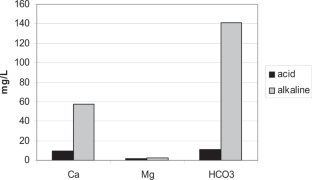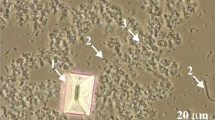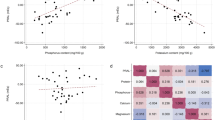Abstract
Scientific study
Acid Rain attacked South West Sweden 1960–1990, making well water acid, causing Cu dissolution from pipes, disturbing intestines. In a scientific study Ca was 6 times higher in alkaline well waters and hair. Women drinking acid water were unhealthy.
Case studies
Case studies: 1 (woman): Scleroderma had caused shortened finger tips, and loss of hair. Urinary pH was 5. Hair analysis showed severe mineral imbalances. After 1.5 years of treatment with supplements and increasing urinary pH with NaHCO3, symptoms disappeared. 2 (woman): Fibromyalgia, cataract, constipation and basal carcinoma was treated by increasing urinary pH with limestone, and supplements. 3 (man). Fe in drinking water, 3.4 mg/L, had caused intestinal disturbances and subsequent symptoms. Fe was elevated in hair. Aloe vera juice, lactic bacteria and digestive enzymes healed his intestines. Mg, antagonist to Fe, decreased severity of Fe overload. Drinking water guideline of 0.2 mg Fe/L is suggested.
This is a preview of subscription content, access via your institution
Access options
Subscribe to this journal
Receive 12 print issues and online access
$259.00 per year
only $21.58 per issue
Buy this article
- Purchase on Springer Link
- Instant access to full article PDF
Prices may be subject to local taxes which are calculated during checkout



Similar content being viewed by others
References
Nihlgård B. Forest decline and environmental stress. In: DV Brune, D Chapman, MD Gwynne, JM Pacyna (eds), The Global Environment, VCH; 1997. pp. 422–40.
Aastrup M, Thunholm B, Johnson J, Bertills U, Berntell A. The Chemistry of Ground Water. The Swedish Bed-rock, SNV (National Swedish Environment Protection Association), Report 4415; 1995.
Bertills U, Hanneberg P. Acidification in Sweden. What do we Know Today? SNV (National Swedish Environment Protection Association), Report 4422; 1995. pp. 58–68.
Flaten TP. A nation-wide survey of the chemical composition of drinking water in Norway, Elsevier, Science of The Total Environment 1991;102:35–73.
Rosborg I. Mineral element contents in drinking water- aspects on quality and potential links to human health. Doctoral thesis, Lund University; 2005.
Ryabukhin YS.Nuclear-based methods for the analysis of trace element pollutants in human hair. J Radioanalytical Chem. 1980;60:7–30.
Karpas Z, Lorber A, Sela H, Paz-Tal O, Hagag Y, Kurttio P, et al. Measurement of the 234U/238U ratio by MC-ICPMS in drinking water, hair, nails, and urine as an indicator of uranium exposure source. Health Phys. 2005;89:315–21.
Park B, Kim MH, Cha CK, Lee YJ, Kim KC. High calciummagnesium ratio in hair is associated with coronary artery calcification in middle aged and elderly individuals. Biol Trace Elem Res. 2017;179:52–8.
Ozgen IT, Dagdemir A, Elli M, Saraymen R, Pinarli FG, Fisgin T, et al. Hair Selenium status in children with leukemia and lymphoma. J Pediatr Hematol Oncol. 2007;2:519–22.
KOÇ ER, İLHAN A, AYTÜRKZ, ACAR R, GÜRLER M, ALTUNTAŞA, et al. A comparison of hair and serum trace elements in patients with Alzheimer disease and healthy participants. Turk J Med Sci. 2015;45:1407–67.
Kedzierska E. Concentrations of selected bioelements and toxic metals and their influence on health status of children and youth residing in Szczecin. Ann Acad Med Stetin. 2003;49:131–43.
Wilhelmsson P. Nutrient medical reference book, in Swedish (Näringsmedicinska uppslagsboken); 2007.
Trace Elements, 4501 Sunbelt Drive, Addison, Texas 75001 USA. Traceelements.com.
Rosborg I, Nihlgård B, Gerhardsson L. Inorganic chemistry of well water in one acid and one alkaline area of south Sweden. WASP. 2002;142:261–77.
Rosborg I, Nihlgård B, Gerhardsson L. Hair element concentrations in females in one acid and one alkaline area in south Sweden. AMBIO. 2003;32:440–6.
Schroeder HA. Municipal drinking water and cardiovascular death rates. JAMA. 1966;195:181–5.
Rubenowitz E, Axelsson G, Rylander R. Mg and Ca in drinking water and death from acute myocardial infarction in women. Epidemiology. 1999;10:31–6.
Rylander R, Bonevik H. Rubenowitz E. Mg and Ca in drinking water and cardiovascular mortality. Scand J Work Environ Health. 1991;17:91–4.
Sakamoto N, Shimizu M, Wakabayashi I, Sakomoto K. Relationship between mortality rate of stomach cancer and cerebrovascular disease and concentrations of magnesium and calcium in well water in Hyogo prefecture. Magnes. Res. 1997:215–23.
Costi D, Calcaterra PG, Iori N, Vourna S, Nappi G, Passeri M. Importance of bioavailable calcium in drinking water for the maintenance of bone mass in post-menopausal women. J Endocrinol Investig. 1999:852–6.
Cepollaro C, Orlandi G, Gonnelli S, Ferrucci G, Arditti JC, Borracelli D, et al. Effect of calcium supplementation as a high-calcium mineral water on bone loss in early postmenopausal women. Calcif Tissue Int. 1996:238–9.
Yang CY, Chiu HF, Cheng MF, Tsai SS, Hung CF, Tseng YT. Mg in drinking water and the risk of death from diabetes mellitus. Magnes Res. 1999c:131–7.
Yang CY, Tsai SS, Lai TC, Hung CF, Chiu HF. Rectal cancer mortality and total hardness levels in Taiwan’s drinking water. Environ Res. 1999a:311–6.
Yang CY, Chiu HF, Cheng MF, Tsai SS, Hung CF, Lin MC. Esophageal cancer mortality and total hardness levels in Taiwan’s drinking water. Environ Res. 1999b:302–8.
Kabacs N, Memon A, Obinwa T, Stoch.l J, Perez J. Lithium in drinking water and suicide rates across the East of England. Br J Psychiatry. 2011;198:406–7.
Ohgami. H, Terao. T, Shiotsuki. I, Ishii. N, Iwata. N. Lithium levels in drinking water and risk of suicide. Br J Psychiatry. 2009;194:464–5.
Chappell WR. Human health effects of molybdenum in drinking water. Cincinnati, O. United States Environmental Protection Agency (EPA-600A-79-006);1979.
Yang G, Ge KY, Chen JS, Chen XS. Selenium-related endemic diseases and the daily selenium requirement of humans. World Rev Nutr Diet. 1988;55:98–152.
Yazbeck C, Kloppmann W, Cottier R, Sahuquillo J, Debotte G, Huel G. Health impact evaluation of boron in drinking water: a geographical risk assessment in Northern France. Environ Geochem Health. 2005:419–27.
Kozisek F. Health risks from drinking demineralized water. In: Nutrients in Drinking water Water, Sanitation and Health Protection and the HumanEnvironment. Geneva: World Health Organization; 2005.
Hopps HC. The biological bases for using hair and nail for analysis of trace elements. Sci Total Environ. 1977;7:71–89.
GARD, Genetic and Rare Diseases Information Center. U:S: Department of Human Health and human Services. https://rarediseases.info.nih.gov/diseases/12430/crest-syndrome.
Shanmugam VK, Steen VD. Renal manifestations in scleroderma: evidence for subclinical renal disease as a marker of vasculopathy. Int J Reum. 2010. www.ncbi.nlm.Nih.gov/pmc/articles/PMC2933853/.
Jan KM, Chien S. Role of surface electric charge in red blood cell interactions. J Gen Physiol. 1973;61:638–54.
Swietach P, Vaughan-Jones IRD, Harris AL, Hulikova A. The chemistry, physiology and pathology of pH in cancer. Philos Trans R Soc Lond B Biol Sci. 2014;19:369.
Croci S, Bruni L, Bussolati S, Castaldo M, Dondi M. Potassium bicarbonate and D-ribose effects on A72 canine and HTB-126 human cancer cell line proliferation in vitro. Springer, Cancer Cell Int. 2011;11:30.
Chao M, Wu H, Jin K, Li B, Wu J, Zhang G, et al. (2016) A nonrandomized cohort and a randomized study of local control of large hepatocarcinoma by targeting intratumoral lactic acidosis. elifesciences.org.
SY. Hair calcium and magnesium levels in patients with fibromyalgia: a case center study. J Manipulative Physiol Ther. 1999;22:586–93.
Electromagnetic fields and public health. Electromagnetic hypersensitivity. Backgrounder, December 2005. https://www.who.int/peh-emf/publications/facts/fs296/en/.
Bisse E, Renner F, Sussmann S, Scholmerich J, Wieland H. Hair iron content: possible marker to complement monitoring therapy of iron deficiency in patients with chronic inflammatory bowel diseases? Clin Chem. 1996;42:1270–4.
Bowman B, Russell R. Present knowledge in NUTRITION. 9th ed. Vol. 1, ILSI Press; 2006.
Klaassen, C, Amdur, M, Doull, J. Toxicology, the basic science of poisons, 5th International Edition. New York: McGraw-Hill, Health Professions Division; 1996.
Rosborg I. Elevated Iron Concentrations in DrinkingWater: A Potential Health Risk. Int J Environ Sci Toxicol Res (IJESTR). 2015;3:66–74.
Funding
This article is published as part of a supplement sponsored by NuOmix-Research k.s. The conference was financially supported by Protina Pharmazeutische GmbH, Germany and Sirius Pharma, Germany, and organised by NuOmix-Research k.s. Neither company had any role in writing of the manuscript.
Author information
Authors and Affiliations
Corresponding author
Ethics declarations
Conflict of interest
The author declares no conflict of interest.
Ethics
Case studies were done in nutrient therapy, and not in school medicine. Case study 1 had died when this article was written. Case study 2 could not be found. Case study 3 was the writer.
Additional information
Publisher’s note Springer Nature remains neutral with regard to jurisdictional claims in published maps and institutional affiliations.
Rights and permissions
About this article
Cite this article
Rosborg, I. Scientific study on acid rain and subsequent pH-imbalances in humans, case studies, treatments. Eur J Clin Nutr 74 (Suppl 1), 87–94 (2020). https://doi.org/10.1038/s41430-020-0690-8
Published:
Issue Date:
DOI: https://doi.org/10.1038/s41430-020-0690-8



